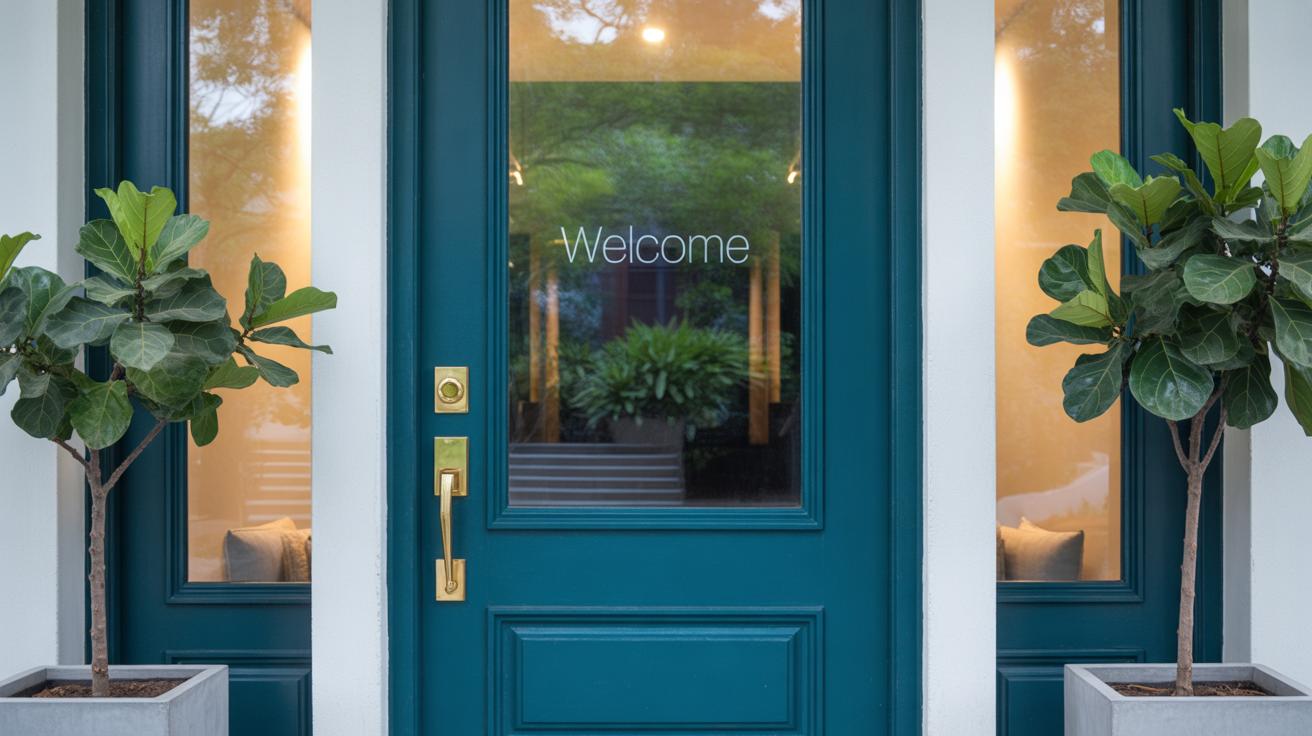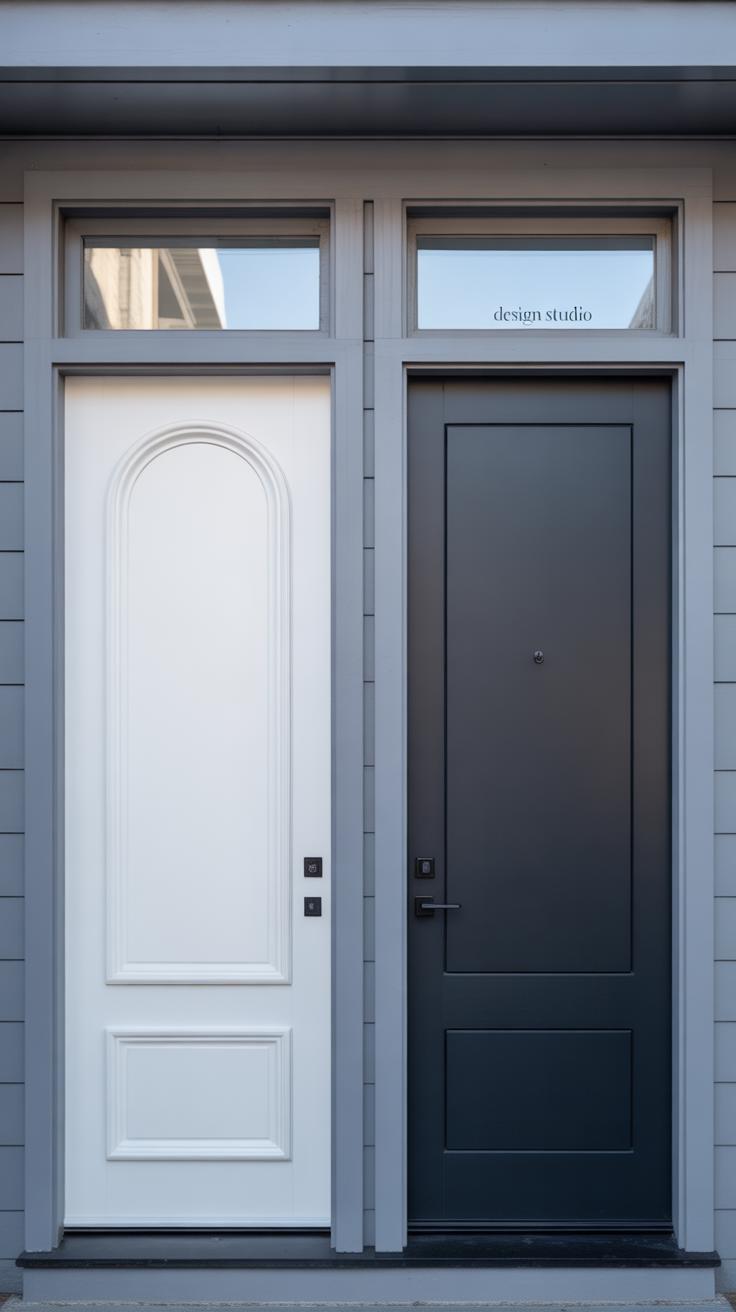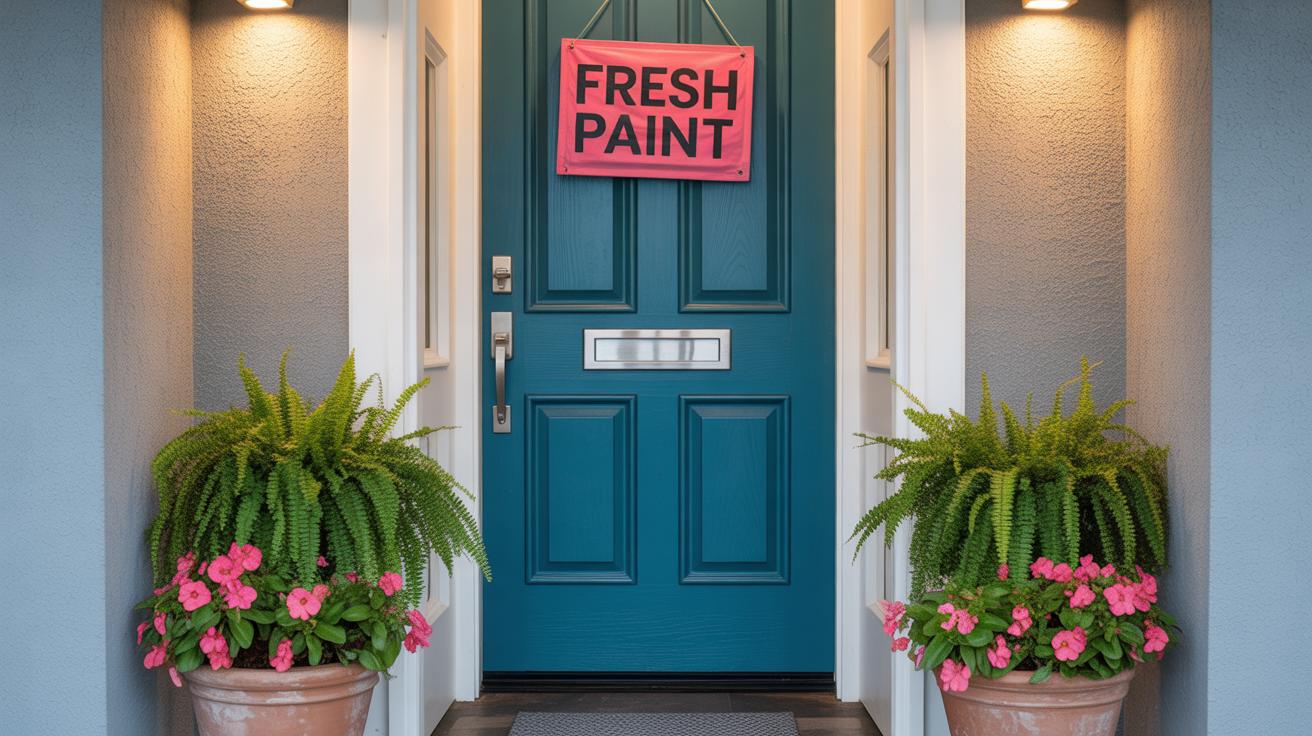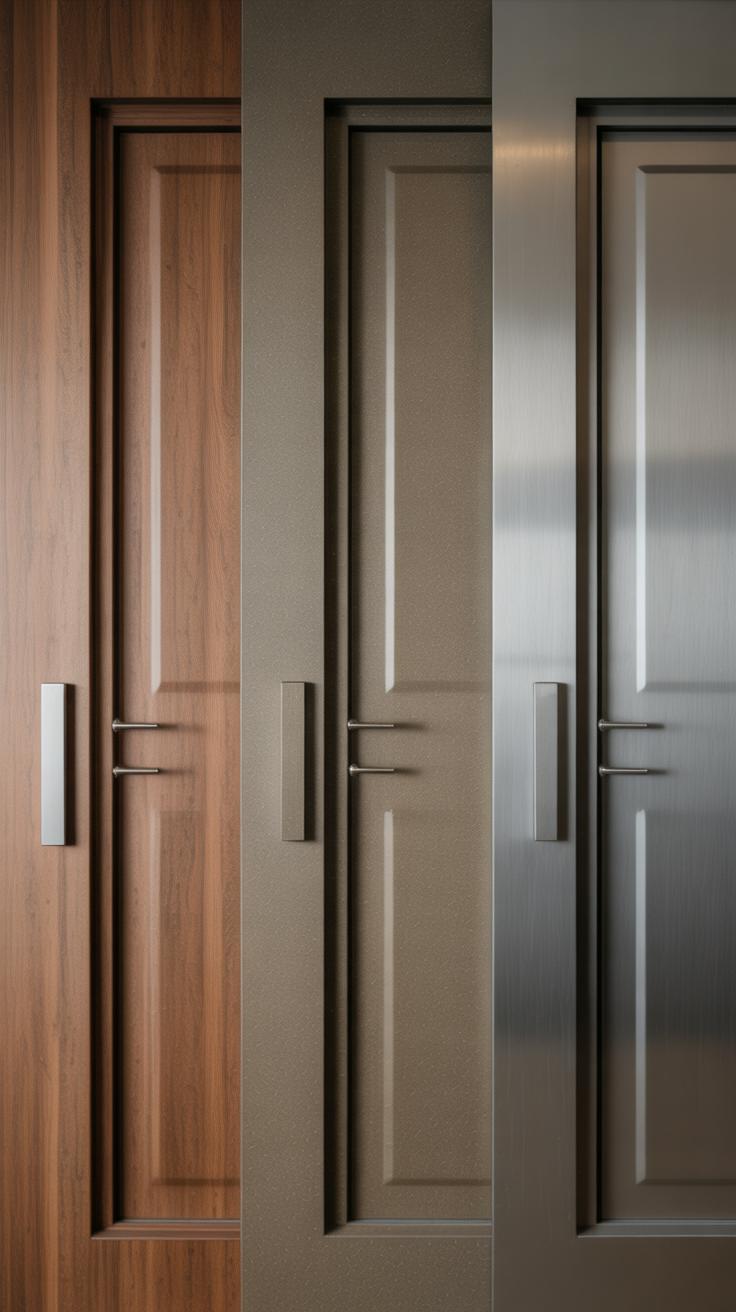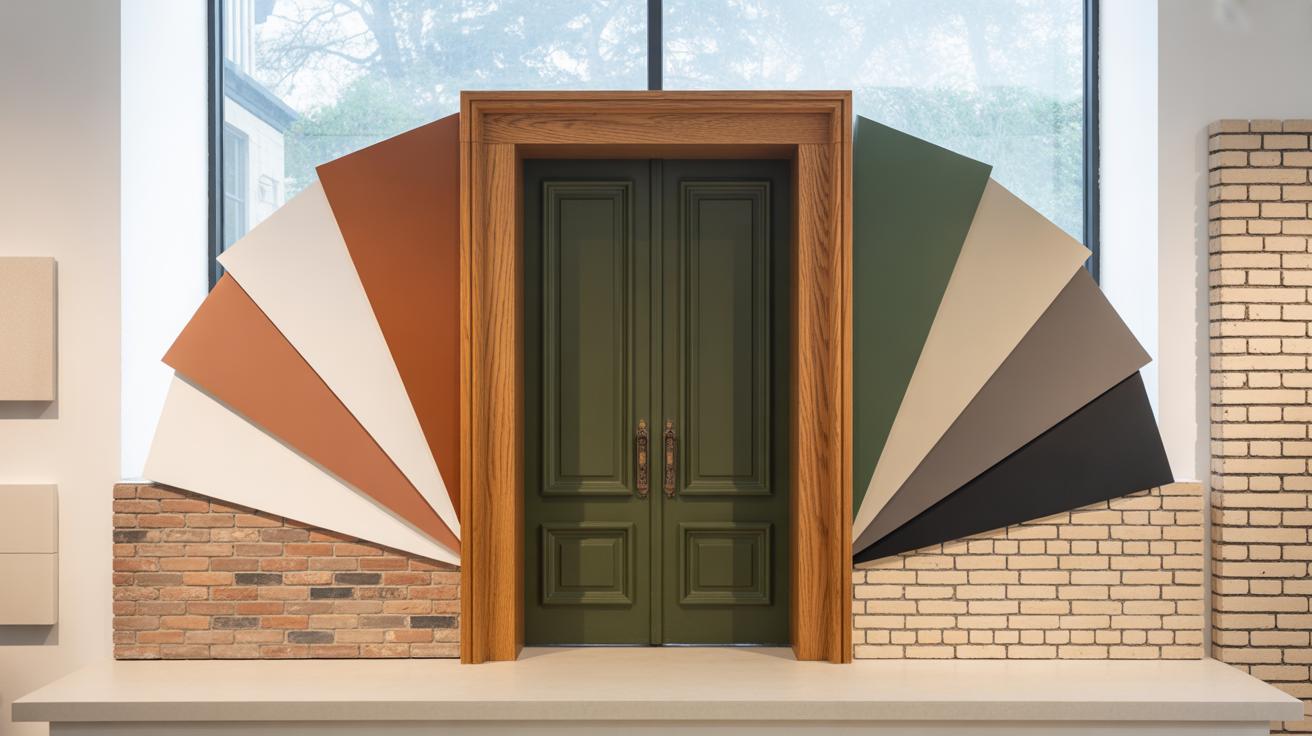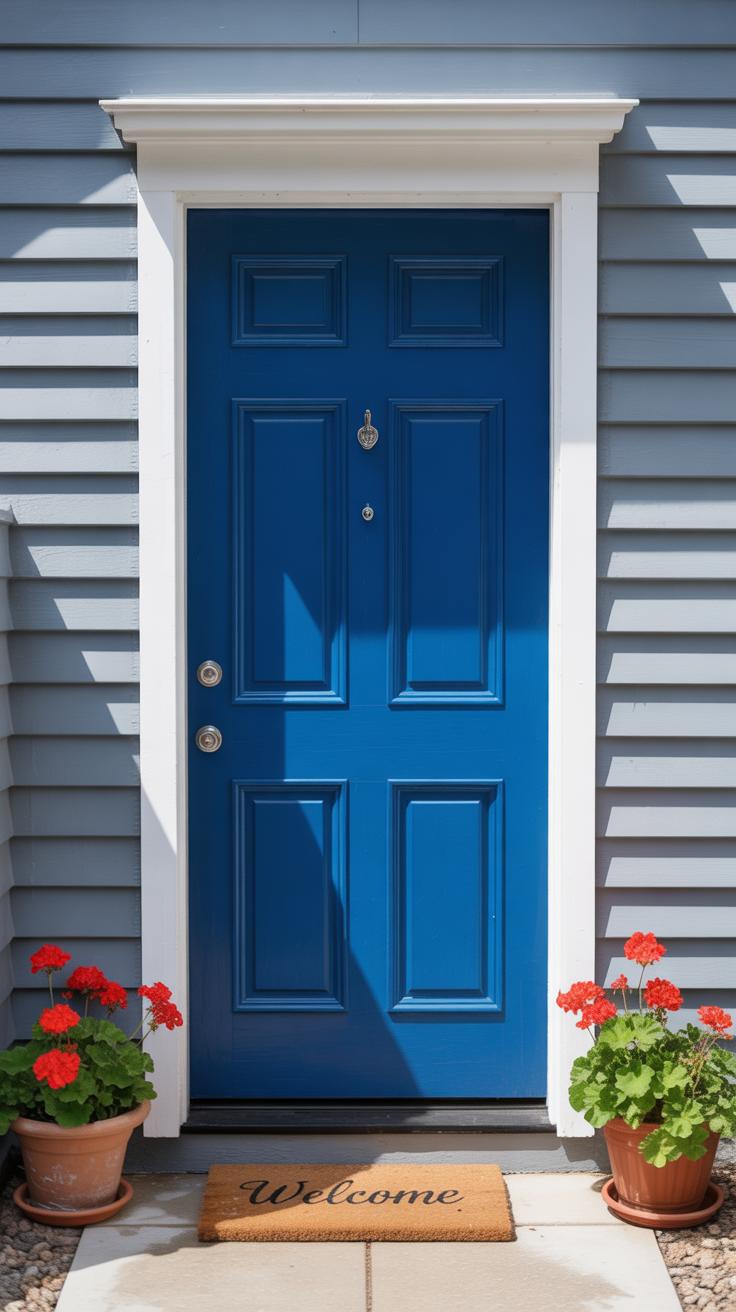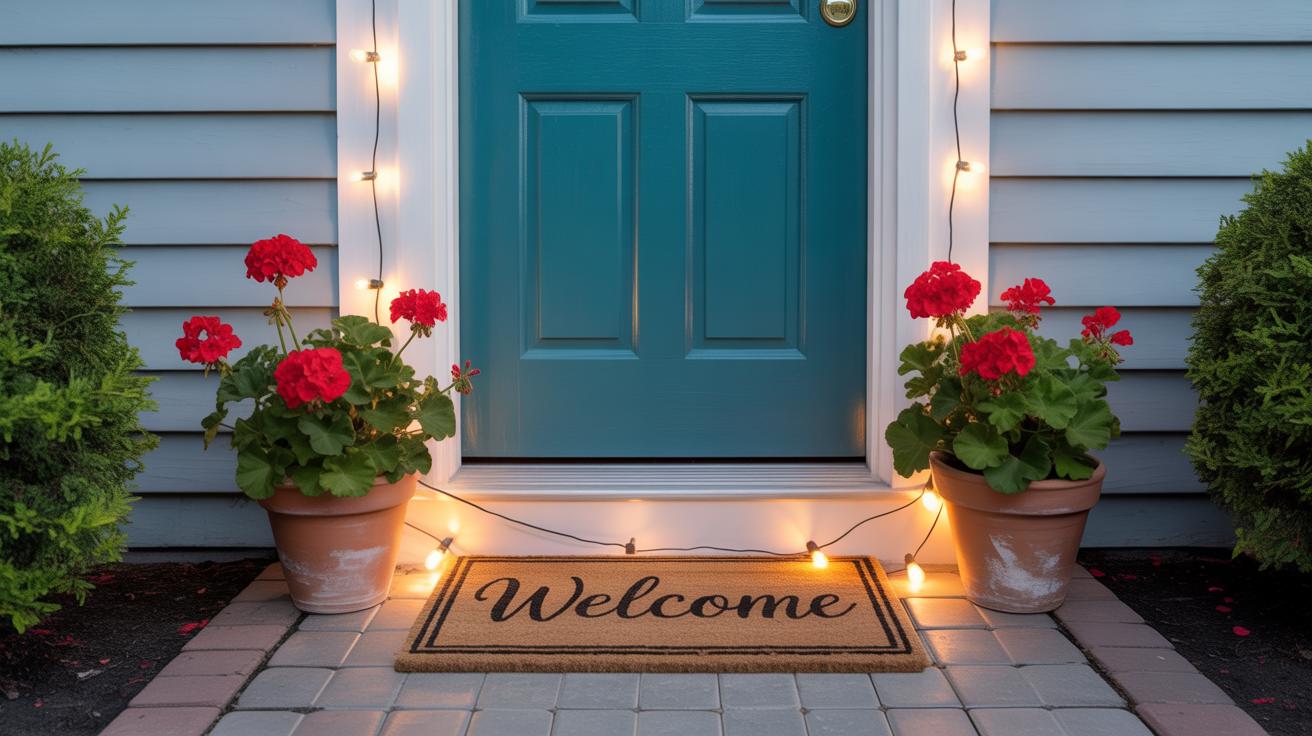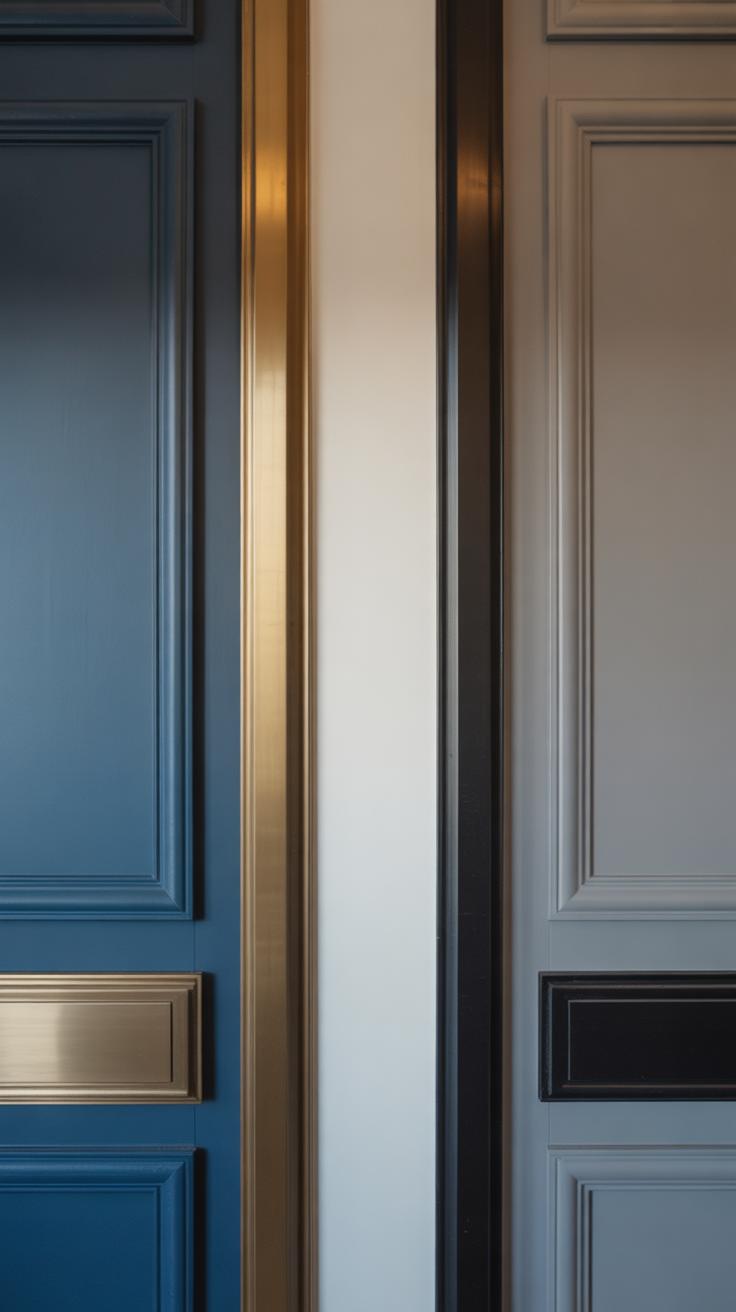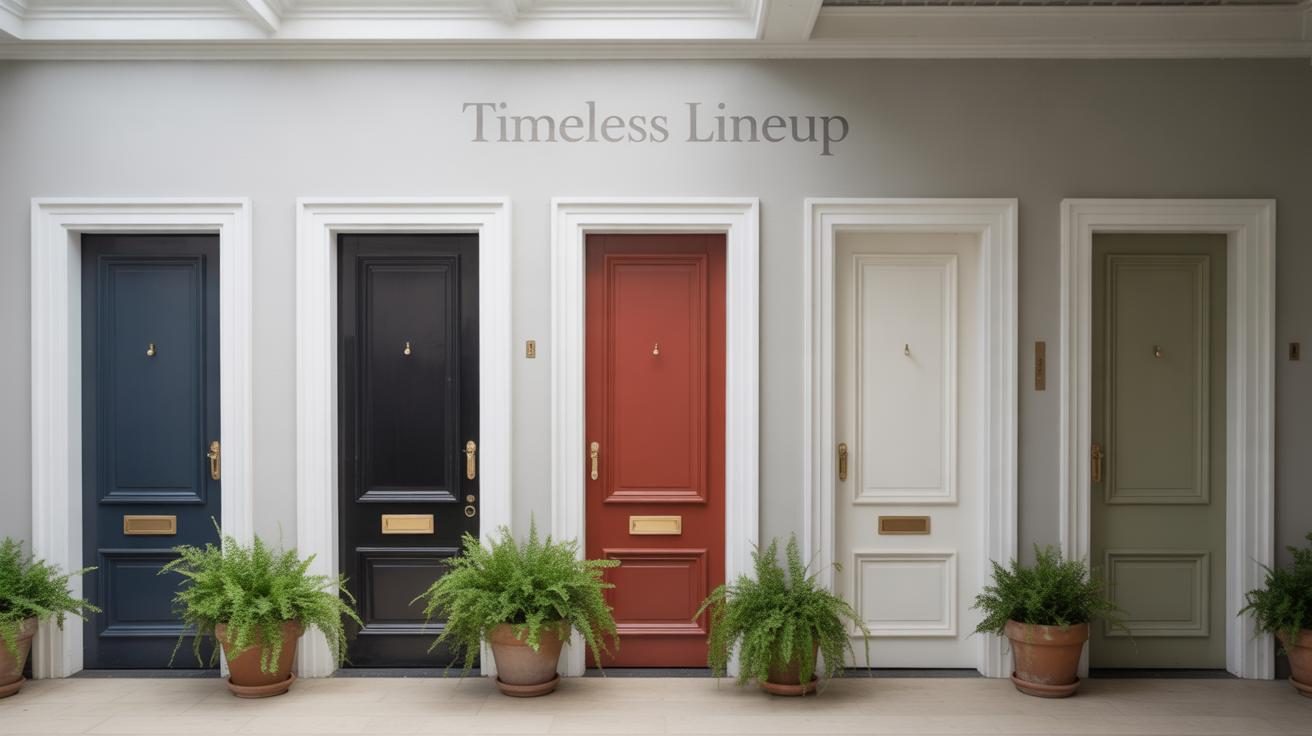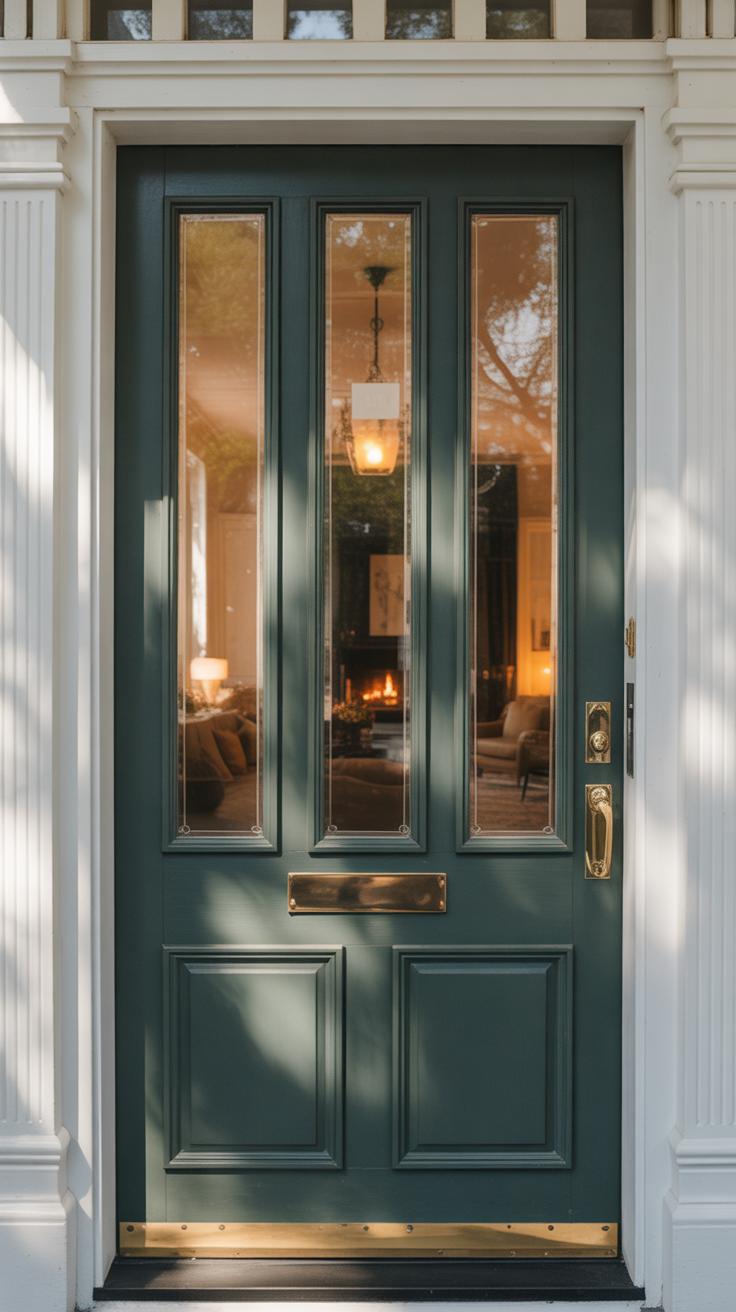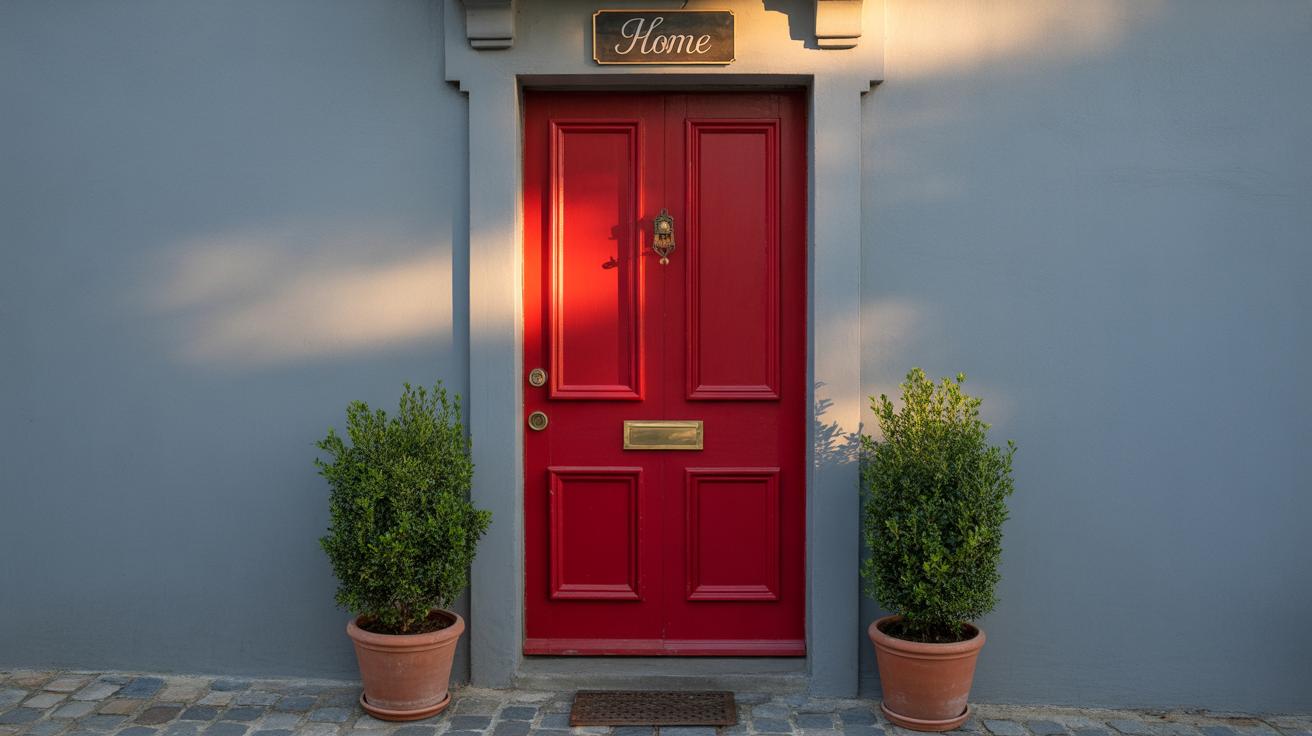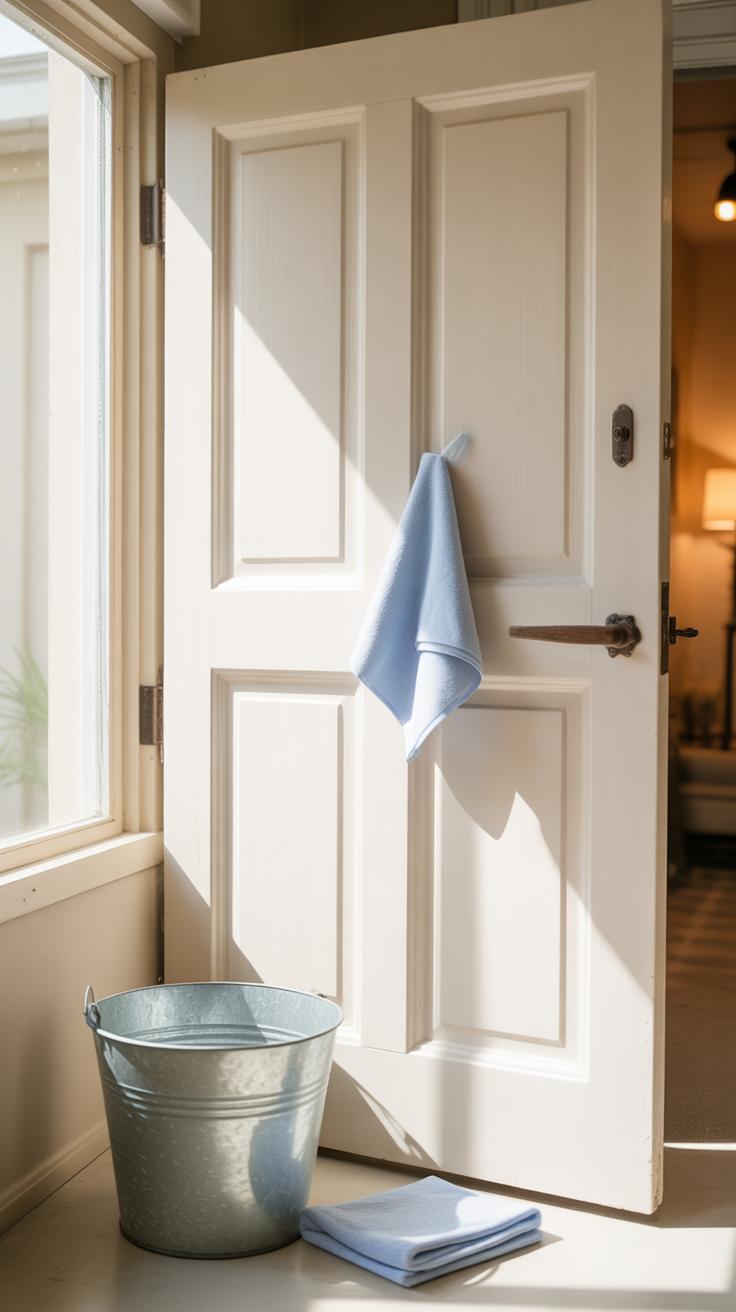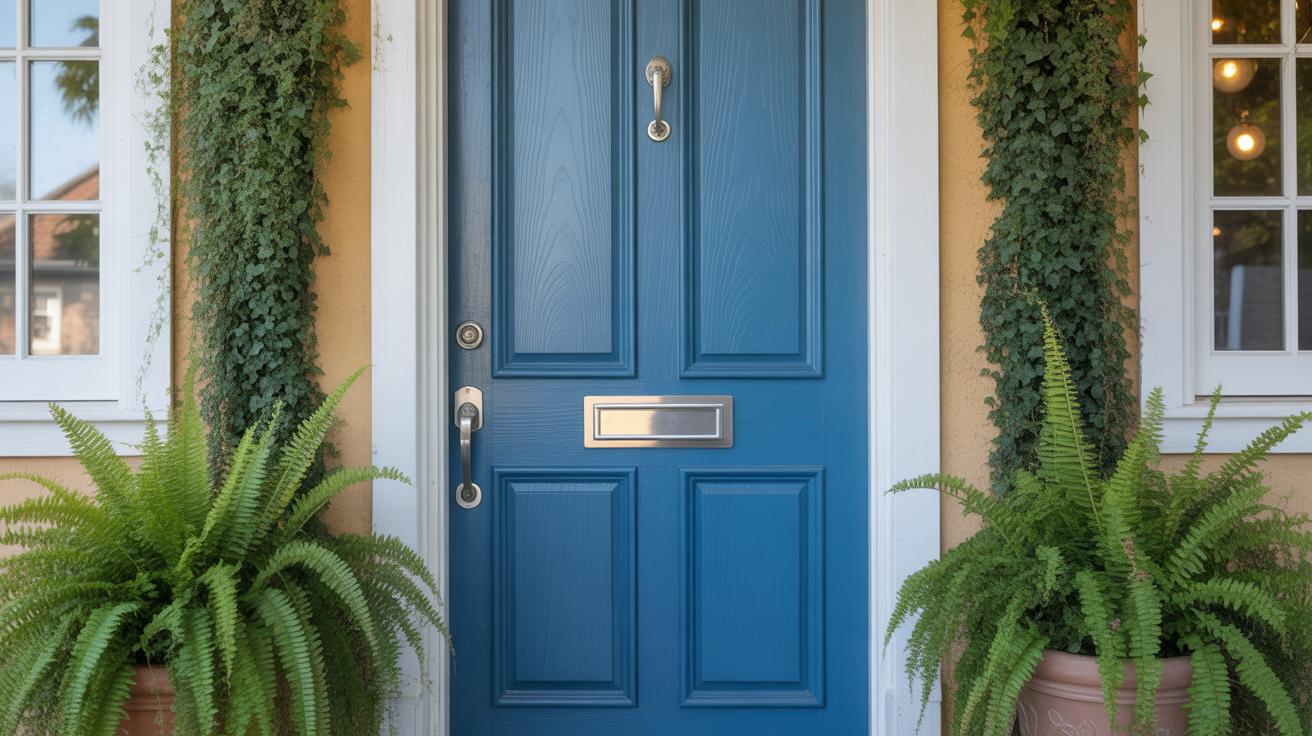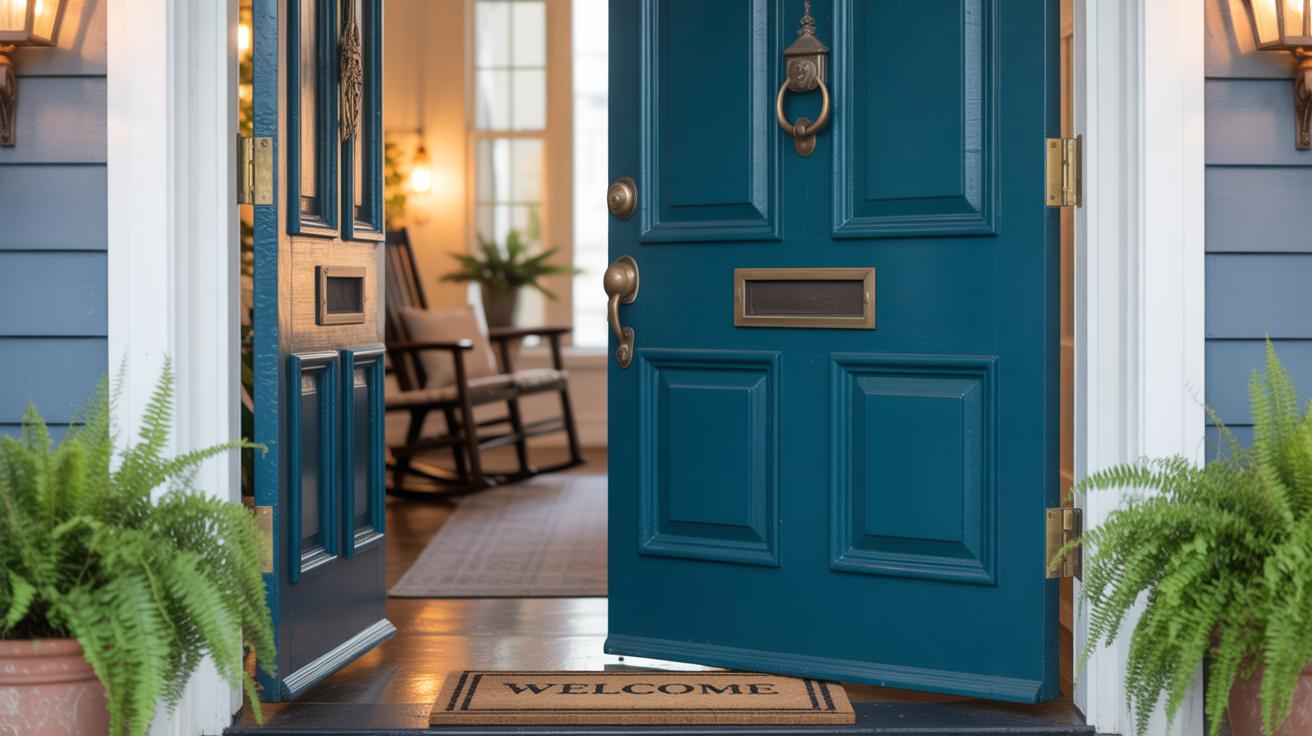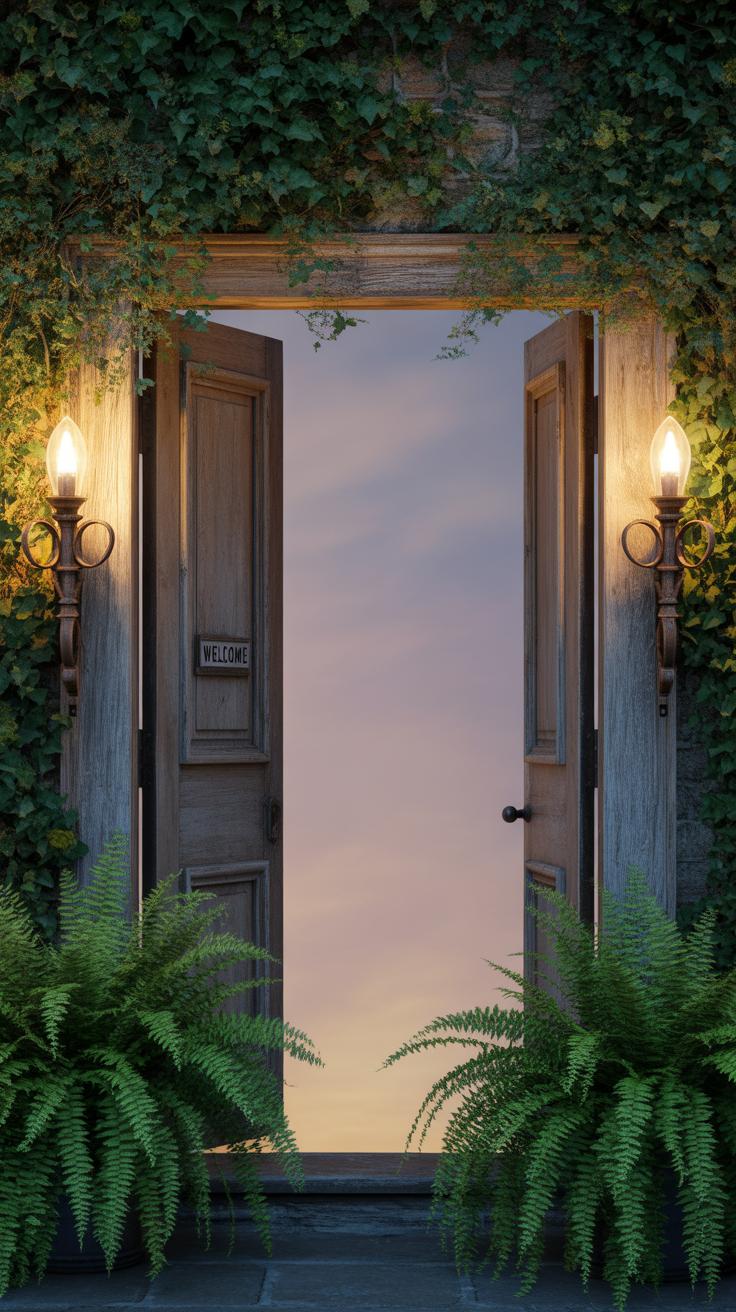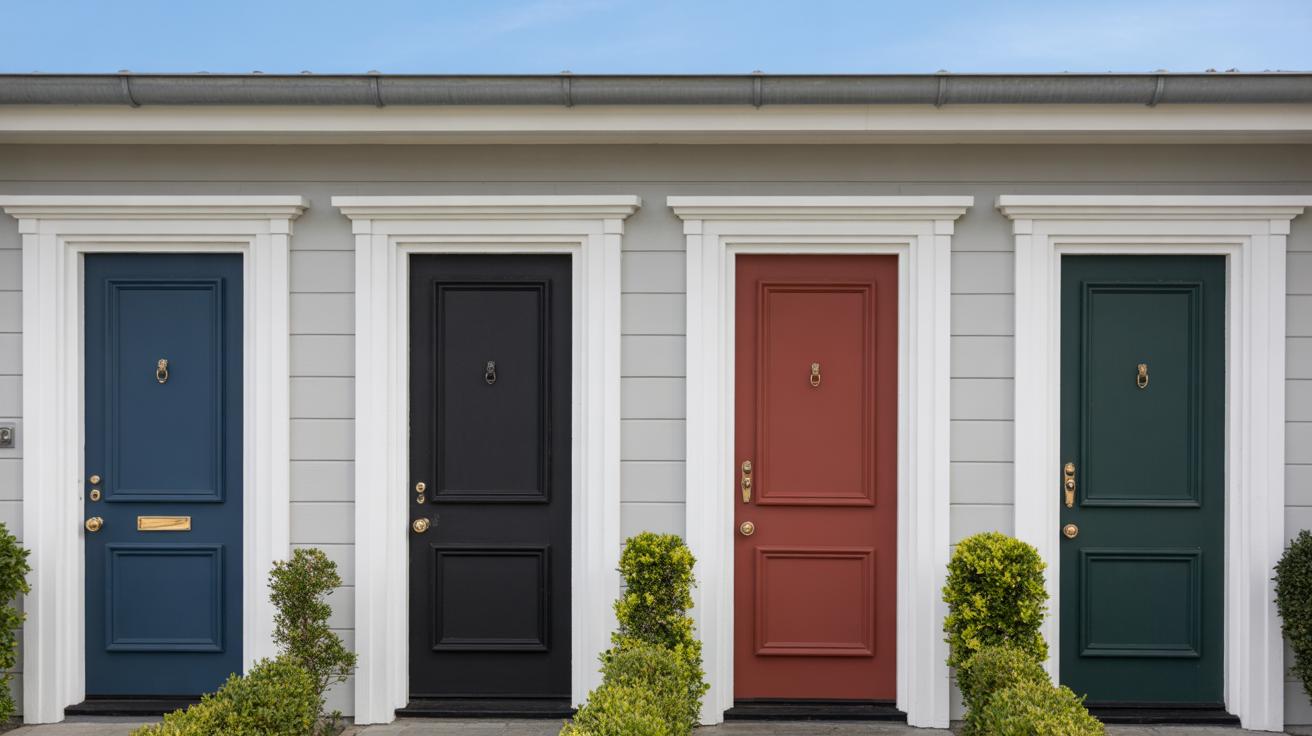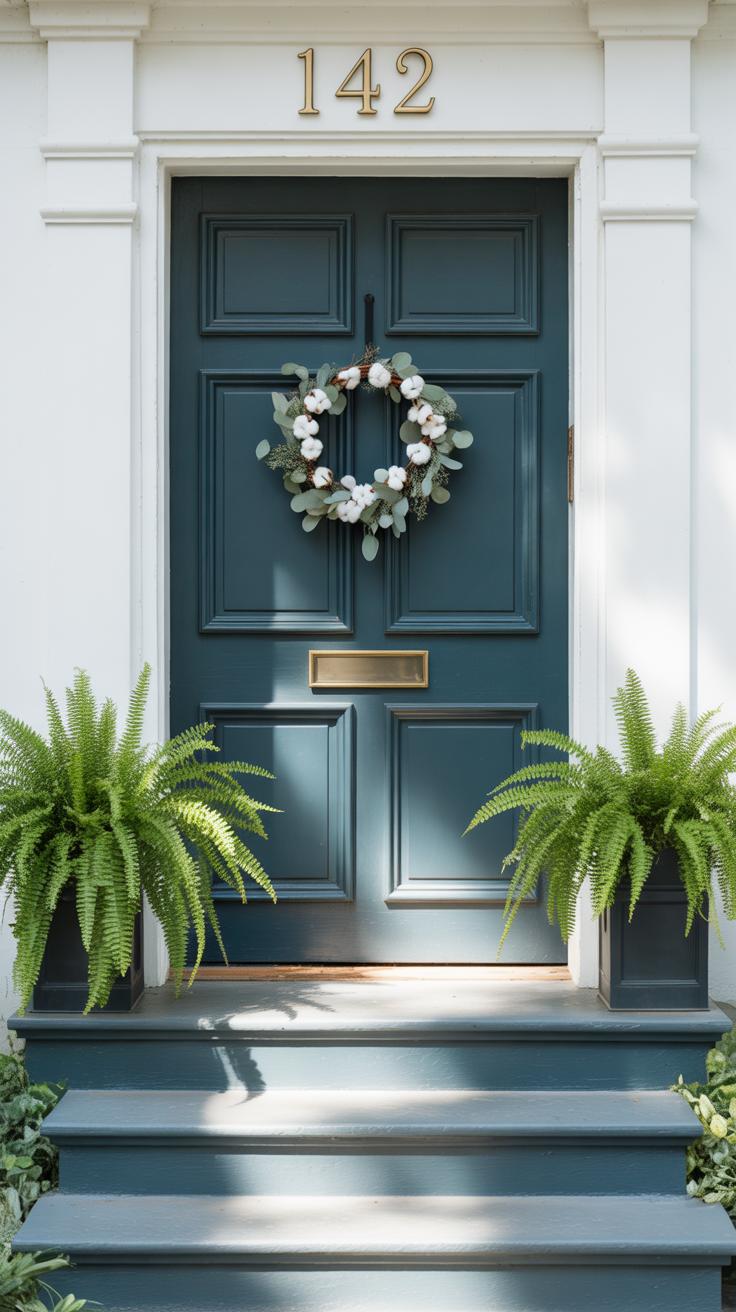Introduction
Your front door is the first thing guests see. It sets the tone for your whole home. A front door that looks good can make your home more welcoming and increase its value. This article helps you find simple ways to create a front door design that makes a strong and bold impression.
We will explore easy design tips, how to pick the best materials, colors, and hardware. Each chapter guides you with clear advice to help you turn your front door into a beautiful and inviting entrance. Let’s look at how you can create a front door design that stands out from the rest.
Choosing the Right Front Door Style
Picking a front door style can feel a bit overwhelming, especially when there are so many directions you could take. Each style really sets the tone for your home’s personality, so it’s worth spending some time thinking about what fits best with your existing look. Sometimes the decision is obvious—the house’s architecture practically demands a certain style—but other times, you might want to shake things up a little.
Traditional and classic doors often feature raised panels, decorative molding, and symmetrical designs. They tend to work well because they emphasize balance and craftsmanship you’d expect in older or more formal homes. You know the type: dark woods or painted neutrals, with maybe a brass handle or a small window with patterned glass. These doors have a quiet confidence and blend in without shouting. That’s why they remain popular; they don’t clash easily.
On the flip side, modern and minimalist doors throw out the frills. Think clean lines, flat surfaces, almost no ornamentation. Materials like sleek metal or smooth painted wood dominate here, and glass inserts are larger and more geometric. This style can feel cool and serious but also welcoming when done right. It works well with homes that are boxy or have a contemporary facade. Sometimes these doors surprise me—they can appear almost understated at first, but later the simplicity grows on you, making a strong statement without fuss.
Rustic or farmhouse styles bring different elements altogether: rougher textures, natural woods, and sometimes wrought iron details. These doors feel warm and grounded but might not suit, say, a minimalist urban home. They have character and charm; yet they demand the right setting, or else they can feel out of place.
When choosing your door style, ask yourself: Does this door complement the architecture or try to redefine it? Are you aiming for harmony, or a bit of contrast? Sometimes the best door choice isn’t about fitting perfectly but standing out just enough to catch a second glance.
Selecting Materials for Durability and Style
When it comes to choosing a front door, the material you pick shapes not just the look, but also the lifespan and feel of your entryway. Wood, steel, and fiberglass dominate the scene, each bringing its own strengths—and quirks.
Wood Doors for Warmth and Beauty
Wood doors offer a kind of warmth you don’t find in metal or composites. They have this classic charm that can anchor any style from rustic to traditional. Yet, they need upkeep; neglect can lead to cracks, warping, or fading. Are you ready to paint or seal every few years? That’s often the catch—wood demands care to stay beautiful. But when treated right, it ages gracefully, with grain patterns that add character. Many homeowners appreciate how wood feels solid and welcoming, though it might not be the best choice for extreme climates or when you want minimal fuss.
Steel and Fiberglass for Strength
Steel doors catch a lot of attention for security and durability. They stand up well to impact or weather and usually cost less than hardwood options. Sometimes, though, they can dent or rust if not properly coated. Fiberglass mimics the look of wood but covers up a lot of wood’s weaknesses. It handles humidity and temperature swings better. Although fiberglass doors often seem like a straightforward pick, they vary widely in quality, so it’s worth looking closely. Both materials offer strong protection—so if you value security or low maintenance, they might be smarter bets than wood.
Picking Colors That Pop
Color shapes how your front door looks in ways you might not first realize. A door isn’t just about function—it’s a statement, a mood, a pause before you enter your home. Picking a color can change everything, shifting the vibe from subtle to striking or vice versa. It’s tempting to go bold, but your choice really depends on how you want your door to talk to the rest of the house, and honestly, your own taste.
Bright colors like red or blue catch the eye immediately. A red door can give a warm, almost inviting feel, but it also demands attention. Blue, depending on the shade, might be calming or energizing—there’s a surprising range here. These colors become landmarks; people remember a house with a brightly painted door. But bold isn’t for everyone or every home. It can clash if you’re not careful.
Neutral colors are less flashy but often more forgiving. Black, white, or gray fit in with almost anything, from classic styles to modern looks. They don’t overpower but offer elegance and a kind of quiet confidence. Sometimes, this timelessness is precisely what your front entrance needs.
When thinking about your color, consider the neighborhood style (you don’t want your door sticking out awkwardly) and your personal vibe. Don’t rush this choice—it can feel surprisingly personal. What do you want your door to say when someone sees it for the first time?
Choosing Hardware to Complement Your Door
Picking the right hardware for your front door is a bit like choosing accessories for an outfit. It can either complete the look or feel totally off. When you look at door hardware, think beyond basics: there are handles, locks, and kick plates, all with styles ranging from sleek modern to more ornate traditional. Matching them to your door style is key, but don’t stress over matching every piece perfectly—sometimes contrasting pieces work surprisingly well.
Handles come in many shapes and finishes—think long vertical bars, classic knobs, or lever handles that curve just right. For a rustic door? Go with something textured or aged brass. A minimalist door? Brushed nickel or matte black often feels right. Locks aren’t just about security; they can be a style statement. Look for deadbolts or smart locks that blend design with function. Some have interesting geometric details or vintage flair.
Kick plates get overlooked but they can add actual personality and protect your door, too. A shiny brass or weathered steel plate can introduce a unique element without screaming for attention. When in doubt, test hardware finishes against your door color under different lighting. Sometimes a subtle mismatch can work, or you might find a tone that unexpectedly pops.
Adding Glass Elements for Light and Style
Adding glass to your front door can change everything about how your entryway feels. It brings in natural light, making even small or dark foyers feel more open. But, of course, letting light in is only part of the story—you also want to maintain your privacy. Striking that balance can be tricky.
Frosted and Textured Glass Options
Frosted glass is a popular choice if privacy is key. There are several types: some have a smooth, misty finish, while others include patterns that break up the view from outside. The interesting thing is, frosted glass still passes plenty of daylight, but it’s hard to see through—perfect if you want light without giving away your living room setup. Textured glass goes a step further by adding design elements that obscure sightlines more aggressively, yet keep things bright.
Think about how much privacy you need. For example, if your door faces a busy street, you might want denser textures or layering with frosted glass panels. On the other hand, if only a small part of your door has glass, a delicate frosted panel can be just right, blending discreetly but effectively.
Clear and Decorative Glass Panels
Clear glass has its charms too. It opens up the space visually and feels inviting. You might worry about privacy with clear glass, but clever designs—like etched borders or small, decorative panes—can add personality while softening views inside. Stained glass is another appealing option. It throws colored light into your entryway and instantly sets a mood, though it can veer toward traditional styles, which may or may not fit your home’s look.
If you want something unique, decorative glass panels come in many forms: geometric patterns, leaded glass, or even custom art pieces. These can create a statement without overwhelming the door’s overall design. The choice depends on your style and how much of a showstopper you want.
To sum up, adding glass to your front door isn’t just about light. It’s also a way to insert style, protect privacy, and express your personality. Did you consider how much natural light resonates with your daily routine? Sometimes the smallest tweaks—like choosing the right glass—make the biggest impression.
Maintaining Your Front Door for Lasting Beauty
You’ve chosen a great front door, now what? Keeping it looking good means regular care—simple steps that don’t take much time but make a difference.
Simple Cleaning and Upkeep Tips
Start with a soft cloth or sponge and mild soap mixed with water. Wipe down your door every few weeks to remove dirt, dust, and grime. Avoid harsh cleaners that can strip paint or damage finishes. Don’t forget the edges, frame, and threshold—those spots can collect buildup quietly. Look closely for any cracks or peeling paint while you clean; catching small issues early saves trouble later.
Also, check the weatherstripping and seals. Even minor damage there can let moisture sneak in and wreak havoc over time. A quick inspection every month or two works well.
When to Repair or Replace Parts
Sometimes hardware wears out—the doorknob might feel loose, hinges creak, or locks get sticky. Fixing these right away keeps your door working smoothly and prevents bigger problems. Tighten screws, lubricate moving parts, or swap out worn handles if needed. I found that a little WD-40 does wonders, though don’t overdo it—you want smooth, not sloppy.
Painting? If you notice fading, peeling, or chipping, consider repainting sooner rather than later. Leaving paint in bad shape invites water damage or warping. Before painting, sand lightly and prime, so the new coat sticks well and lasts longer. Sometimes repainting feels like a hassle, but it truly resets your door’s look.
In the end, keeping an eye on small fixes helps your front door keep the bold impression you wanted. Neglect it, and even the best design won’t shine through for long. Have you checked your door lately?
Improving Entryway Lighting to Highlight Your Door
Lighting can change everything about how your front door looks, both day and night. During the day, natural shadows and highlights shape the entry’s character, but once darkness falls, the right lighting truly brings your door to life. It’s not just about visibility—lighting adds depth, texture, and even mood. You might be surprised how a well-placed light can turn a simple door into a focal point that invites guests in.
Choosing the Right Exterior Lighting
There are plenty of choices when it comes to outdoor lighting, and each can create a different feel. Wall sconces are a classic pick, often placed on either side of the door. They offer balanced illumination but can also showcase your door’s design—think about sconces with clear glass for a brighter glow or frosted ones for softer light. Lantern-style fixtures bring a traditional charm, while recessed or overhead lights add a modern touch.
Before settling, consider the material of your door and the overall style of your home. Brass or bronze fixtures work beautifully with dark woods, but black or matte finishes might suit more contemporary settings better. Experimenting with a mix can sometimes work, too—though that’s a bit risky if you’re aiming for a cohesive look.
Using Lighting to Create a Welcoming Entrance
Where you place the lights can affect both safety and style. Too much lighting might feel harsh or overwhelming. Too little, and your door fades into the background. Generally, illuminating your path and steps helps prevent trips, making visitors feel safer. Layer this with focused lighting on the door itself, and you create a warm invitation.
Try placing sconces at eye level to evenly light the door face. If you have stairs or an overhang, subtle recessed lights can highlight these features without being intrusive. Some homeowners add motion-sensor lights for practical reasons—but they’re not always the best choice if you want a gentle, consistent glow. Finding a lighting balance can take some trial and error.
Lighting can also emphasize texture, like the grain on a wooden door or the bevels on a glass insert. A little directional spotlight angled from above can bring out those details in a way that’s hard to achieve otherwise. So, think about your door not just as a functional element, but as a design piece that lighting can spotlight—quite literally.
Incorporating Dcor Around Your Front Door
When thinking about dressing up the space around your front door, little details like plants and mats really do more than just fill the space—they set a mood. A well-chosen doormat isn’t just functional; it can frame the entrance and invite a closer look. Maybe you prefer something clean and modern, or perhaps a textured natural fiber mat that feels warm underfoot. Either way, it can instantly change how welcoming your door feels.
Plants offer something a bit unpredictable but charming. Tall planters with sculptural foliage add height, guiding the eye naturally toward your door. Or place a pair of matching pots on either side for a balanced, polished look. Choosing plants that thrive in your climate means you won’t have to fuss endlessly, which is always a bonus.
Door Mats and Planters That Add Charm
Doormats and planters do more than you might guess. They bring color, texture, and a touch of personality. For example, a bright mat can contrast nicely with a dark door, while a neutral or earthy mat can soften sharp edges. I once swapped a synthetic mat for one made of coir, and even that simple change felt like the entrance breathed a bit more.
Planters can be your seasonal chameleons. You can start with evergreens for winter, swap them for flowering plants in warmer months, or mix grasses and succulents for an effortless look. Size matters too. Oversized pots can create drama, but sometimes just one or two smaller containers feel more approachable.
Seasonal Decorations to Refresh the Look
Rotating your decorations with the seasons can make your entrance feel alive rather than static. Think beyond just traditional wreaths—maybe a cluster of autumn gourds on one side, a lantern surrounded by pinecones and holly in winter, or a ceramic rabbit planter for spring. Subtle shifts keep your door fresh.
Changing mats seasonally is something I don’t see often, but it’s definitely worth trying. Imagine a cool pastel mat in spring making way for a bold geometric design in the summer. These small swaps keep things interesting without a big overhaul.
What’s your door’s current vibe? Could a couple of new pots or a fresh mat completely surprise your guests? Sometimes, the simplest updates have the biggest impact.
Conclusions
A well-designed front door can change the look and feel of your home. It welcomes visitors and shows your style. From choosing the right style and material to picking the right color and hardware, each step matters. Small details can create a big impact.
Remember to think about your home’s overall look and your personal taste. Use the tips here to pick a front door design that feels right for you. Your front door can make a bold first impression that lasts.

